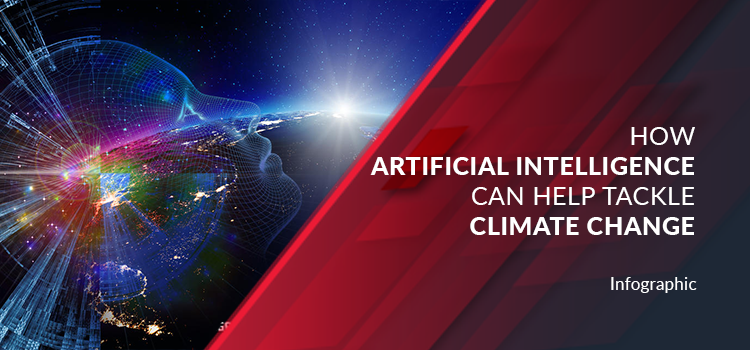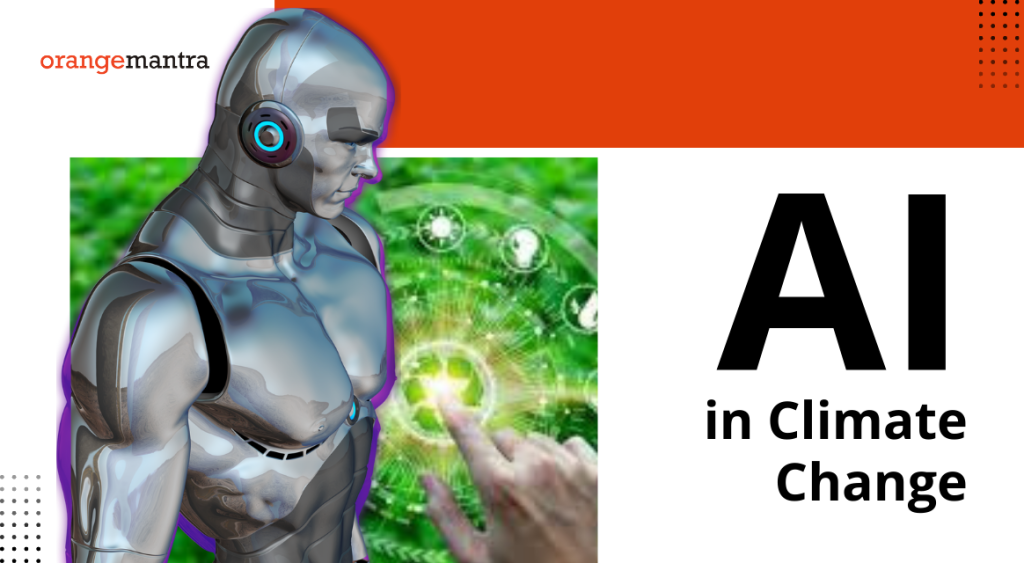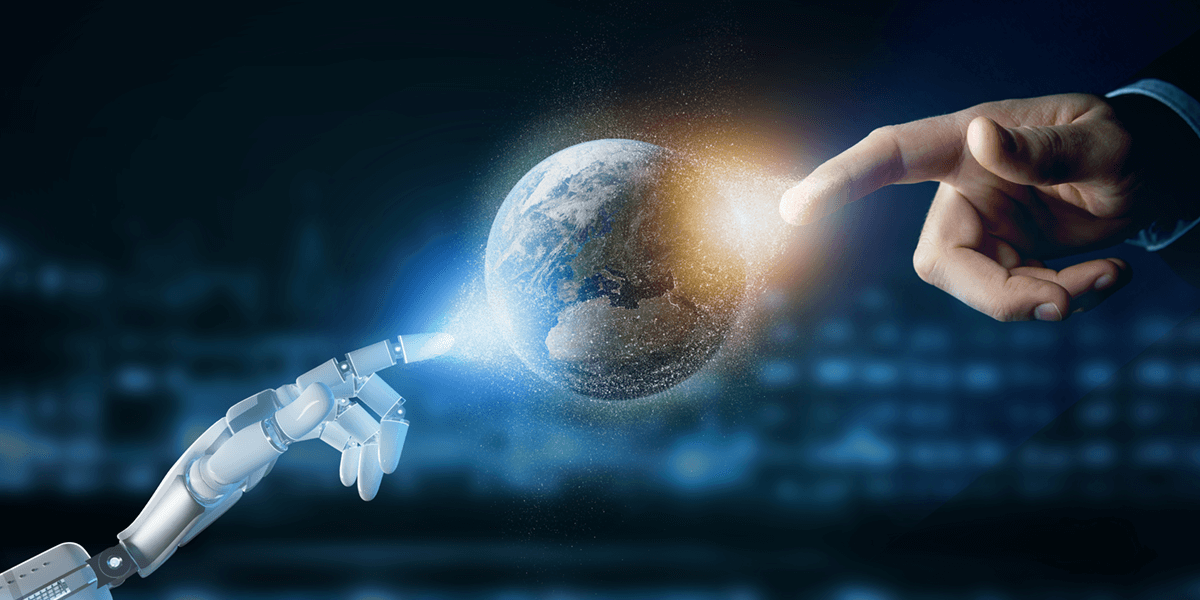AI & Gaia: How Artificial Intelligence is Re-Greening Our Planet
(Introduction: The Age of Algorithmic Ecology)
For millennia, humanity has wrestled with nature, sometimes in harmony, often in conflict. Today, we face an unprecedented environmental crisis, a tapestry woven from climate change, resource depletion, and biodiversity loss. But a new hero has emerged: Artificial Intelligence. More than just a futuristic fantasy, AI is rapidly becoming a vital tool, a digital ecosystem partner helping us understand, manage, and ultimately, heal our wounded planet. This isn’t just about fancy algorithms; it’s about using the power of data and intelligent systems to build a sustainable future.
(1. Climate Control: AI’s Role in Battling the Greenhouse Effect)
Climate change is the ultimate challenge, a global puzzle with trillions of pieces. AI is not only analyzing existing data but also driving new solutions.
- Predictive Modeling: AI algorithms analyze complex climate models, predicting extreme weather events with greater accuracy and providing valuable warnings, optimizing energy consumption, and developing resilient infrastructure.
- Renewable Energy Optimization: AI systems are revolutionizing how we generate and distribute clean energy. They intelligently manage solar and wind farms to maximize output based on weather patterns and grid demand.
- Carbon Capture and Storage: AI is playing a role in optimizing carbon capture technologies, making them more efficient and cost-effective. It’s like teaching a machine to exhale carbon dioxide, converting it into usable resources.
Table 1: AI’s Climate Crusaders
| Action | AI Application | Impact |
|---|---|---|
| Weather Prediction | Deep Learning Models | Accurate forecasts, disaster preparedness |
| Renewable Energy | Smart Grids, Optimization Algorithms | Increased efficiency, reduced carbon footprint |
| Carbon Capture | Process Optimization, Data Analysis | Enhanced efficiency, reduced capture costs |
(2. Protecting Biodiversity: AI as the Guardian of Life)
The loss of biodiversity is a slow, silent tragedy. AI is stepping in as a digital guardian, protecting endangered species and preserving delicate ecosystems.
- Wildlife Monitoring: AI-powered drones and camera traps are used to monitor animal populations and track their movements, identifying threats and enabling targeted conservation efforts.
- Habitat Restoration: AI algorithms analyze vast datasets of soil, water, and vegetation, allowing for optimal habitat restoration projects.
- Species Identification: AI systems analyze images and sounds to quickly identify different species, assisting scientists in biodiversity surveys.
Table 2: Ecosystem Architects: AI’s role in biodiversity
| Application | AI Technology | Benefit |
|---|---|---|
| Wildlife Monitoring | Computer Vision, Machine Learning | Early threat detection, population tracking |
| Habitat Restoration | Predictive Modeling, Optimization | Efficient restoration, resource allocation |
| Species Identification | Image Recognition, Audio Analysis | Automated surveys, faster data processing |
(3. Resource Management: AI’s Approach to Scarcity)
Our planet’s resources are finite. AI helps us use them wisely, optimizing consumption and reducing waste.
- Smart Agriculture: AI-powered systems analyze soil conditions, weather patterns, and crop health, optimizing irrigation, fertilization, and pest control, minimizing resource use and maximizing yields.
- Waste Reduction and Recycling: AI algorithms sort waste, identify recyclable materials, and optimize collection routes. This streamlines the recycling process and reduces landfill waste.
- Water Management: AI systems monitor water usage, detect leaks, and predict water demand. This ensures efficient water distribution and conservation, which is particularly relevant in drought-prone areas.
Table 3: Resourceful Minds: AI’s optimization of resources
| Resource | AI Application | Impact |
|---|---|---|
| Agriculture | Precision Farming, Predictive Analysis | Reduced water use, increased crop yields, less waste |
| Waste Management | Sorting Algorithms, Route Optimization | Enhanced recycling, minimized landfill waste |
| Water Management | Leak Detection, Demand Prediction | Reduced water consumption, optimized distribution |
(4. The Ethical Landscape: Navigating AI’s Green Future)
While AI offers incredible potential, we must navigate its use responsibly.
- Data Privacy: Protecting data privacy is paramount, especially when using AI for environmental monitoring.
- Algorithmic Bias: We must ensure that AI systems are unbiased and do not perpetuate existing environmental injustices.
- Transparency and Accountability: We need transparent AI systems and clearly defined accountability for their actions.
(Conclusion: A Greener Tomorrow, Driven by Algorithms)
Artificial Intelligence is not a silver bullet, but it’s a powerful ally in our fight to protect the environment. As AI technology evolves, it will play an increasingly crucial role in solving complex environmental challenges, from climate change mitigation to biodiversity conservation. By embracing ethical guidelines, we can unlock AI’s full potential and forge a greener future, one algorithm at a time. The future of our planet depends on it.

Additional Information
Artificial Intelligence: A Powerful Ally in Solving Environmental Issues
Artificial Intelligence (AI) is rapidly emerging as a potent tool in tackling some of the world’s most pressing environmental challenges. Its ability to analyze vast datasets, identify complex patterns, and automate tasks makes it uniquely suited to address issues like climate change, pollution, deforestation, and resource depletion. Here’s a detailed breakdown of how AI is contributing to environmental solutions, along with in-depth analysis:
I. Climate Change Mitigation & Adaptation:
- 1. Predicting Climate Change and Modeling Impacts:
- How AI Helps: AI algorithms, particularly machine learning (ML) models like deep neural networks, can process massive climate datasets from satellites, weather stations, and climate models. They identify patterns and correlations that reveal climate trends and predict future changes with increased accuracy.
- Detailed Analysis:
- Enhanced Climate Modeling: AI can improve the precision and resolution of climate models by incorporating complex interactions between atmospheric, oceanic, and land systems. This leads to more accurate predictions of extreme weather events like hurricanes, floods, and droughts.
- Regionalized Predictions: AI can analyze localized data to predict the impact of climate change on specific regions, enabling tailored adaptation strategies.
- Sea Level Rise Modeling: AI models can forecast sea level rise based on factors like ice sheet melting, thermal expansion, and ocean currents, helping coastal communities prepare for rising waters.
- Examples: Using AI to predict the impact of climate change on agricultural yields, water resources, and infrastructure.
- 2. Optimizing Renewable Energy Systems:
- How AI Helps: AI algorithms can optimize the performance of renewable energy sources like solar, wind, and hydropower. They analyze historical data, real-time conditions, and energy demand to improve efficiency and reduce reliance on fossil fuels.
- Detailed Analysis:
- Predictive Maintenance: AI can analyze sensor data from wind turbines and solar panels to predict equipment failures, allowing for proactive maintenance and minimizing downtime.
- Smart Grids: AI-powered smart grids can optimize the distribution of renewable energy by balancing supply and demand, storing excess energy, and integrating with electric vehicles.
- Energy Storage Optimization: AI algorithms can manage energy storage systems, such as batteries, by analyzing demand patterns and grid conditions, maximizing energy efficiency and reducing costs.
- Examples: Google’s use of AI to predict solar power output from its solar farms and optimize energy storage to reduce carbon emissions.
- 3. Reducing Greenhouse Gas Emissions:
- How AI Helps: AI can optimize processes that release greenhouse gases across various sectors like transportation, agriculture, and industry.
- Detailed Analysis:
- Smart Transportation: AI can optimize traffic flow, route planning, and public transportation networks to reduce fuel consumption and emissions. Self-driving cars also have the potential to further improve fuel efficiency and reduce congestion.
- Precision Agriculture: AI can help farmers optimize irrigation, fertilizer application, and pest control, reducing emissions from agriculture and improving crop yields.
- Industrial Optimization: AI can optimize industrial processes by analyzing data to identify inefficiencies and reduce energy consumption and waste generation, thereby lowering greenhouse gas emissions.
- Carbon Capture and Storage (CCS): AI can optimize the process of separating carbon dioxide from industrial emissions and storing it underground or utilizing it for other purposes.
- Examples: Using AI to optimize city traffic management systems, develop more efficient agriculture practices, and improve energy efficiency in industrial plants.
- 4. Monitoring and Analyzing Carbon Footprints:
- How AI Helps: AI can automate the process of calculating and tracking carbon emissions, providing data-driven insights for businesses and individuals.
- Detailed Analysis:
- Data Aggregation: AI can collect and analyze data from various sources (e.g., energy consumption, transportation, waste management) to determine an entity’s carbon footprint.
- Emission Reduction Strategies: AI can identify areas where emissions can be reduced and recommend strategies for optimizing operations and reducing environmental impact.
- Reporting and Compliance: AI can automate the generation of carbon emission reports to meet regulatory requirements and track progress towards sustainability goals.
- Examples: AI-powered platforms that calculate the carbon footprint of companies and individuals, and track the effectiveness of emission reduction initiatives.
II. Pollution Control & Waste Management:
- 1. Detecting and Monitoring Pollution:
- How AI Helps: AI, particularly through computer vision and image recognition, can analyze satellite imagery, drone footage, and sensor data to detect pollution sources and track the spread of contaminants.
- Detailed Analysis:
- Air Quality Monitoring: AI can analyze data from air quality sensors to identify pollution hotspots, predict air quality levels, and alert authorities and the public to health risks.
- Water Pollution Detection: AI can analyze satellite data and water samples to detect oil spills, chemical leaks, and algal blooms, enabling rapid response and remediation efforts.
- Waste Management and Sorting: AI-powered robots and vision systems can automate the sorting of waste materials, improving recycling efficiency and reducing landfill waste.
- Examples: Using AI to monitor air quality in cities and identify illegal dumping sites, developing AI-powered robots that sort recyclable materials more efficiently.
- 2. Cleaning up Pollution:
- How AI Helps: AI can optimize pollution cleanup efforts, such as identifying the most effective methods for removing pollutants and guiding cleanup robots.
- Detailed Analysis:
- Remediation Site Optimization: AI can analyze data about contaminated sites to identify the most effective cleanup strategies and prioritize remediation efforts.
- Autonomous Cleaning Robots: AI-powered robots can be deployed to clean up oil spills, remove plastic waste from oceans, and decontaminate hazardous waste sites.
- Examples: Developing AI-powered robots that can autonomously remove plastic waste from oceans and AI-powered platforms that help remediate polluted sites.
- 3. Waste Management and Recycling:
- How AI Helps: AI can optimize waste management processes to reduce waste generation, improve recycling rates, and promote circular economy models.
- Detailed Analysis:
- Waste Reduction and Optimization: AI can analyze data about waste generation patterns to identify opportunities for waste reduction and optimize waste collection routes.
- Predictive Maintenance in Waste Management: AI can predict equipment failures in waste management facilities, allowing for proactive maintenance and reducing downtime.
- Smart Bins and Waste Collection: AI can be integrated into smart bins that monitor fill levels and optimize waste collection routes, reducing transportation costs and emissions.
- Examples: Developing AI-powered robots that sort waste at recycling plants, using AI to optimize waste collection routes and reduce transport costs.
III. Biodiversity Conservation & Natural Resource Management:
- 1. Monitoring and Protecting Wildlife:
- How AI Helps: AI, coupled with image recognition and computer vision, can analyze data from camera traps, drones, and acoustic sensors to monitor wildlife populations, track their movement, and detect poaching.
- Detailed Analysis:
- Species Identification: AI can identify different animal species from camera trap images and automatically count them, providing valuable data on population sizes and distribution.
- Poaching Detection: AI can analyze data from sensors and drones to detect illegal activities like poaching, allowing for rapid intervention by conservation authorities.
- Habitat Monitoring: AI can analyze satellite imagery and drone footage to monitor habitat loss, deforestation, and degradation, allowing for the identification of areas needing urgent conservation efforts.
- Examples: Using AI to analyze camera trap images to monitor wildlife populations, developing AI-powered systems to detect poaching activities.
- 2. Combating Deforestation:
- How AI Helps: AI can analyze satellite imagery and drone footage to monitor deforestation patterns, identify illegal logging activities, and assess the impact of deforestation on ecosystems.
- Detailed Analysis:
- Deforestation Detection: AI can detect deforestation in real-time by analyzing satellite imagery, allowing for timely intervention to prevent further forest loss.
- Early Warning Systems: AI can analyze data about climate patterns, forest fires, and human activities to develop early warning systems for deforestation risks.
- Reforestation Planning: AI can help optimize reforestation efforts by identifying the most suitable tree species and planting locations.
- Examples: Using AI to monitor deforestation in the Amazon rainforest, developing AI-powered systems that can predict forest fires.
- 3. Sustainable Agriculture and Fisheries:
- How AI Helps: AI can optimize agricultural practices to improve crop yields, reduce resource consumption, and minimize environmental impacts. It can also help manage fisheries sustainably.
- Detailed Analysis:
- Precision Farming: AI can analyze data from sensors, drones, and satellite imagery to optimize irrigation, fertilizer application, and pest control, minimizing water and chemical use.
- Smart Fisheries: AI can analyze data from sensors and monitoring systems to optimize fishing practices, reduce overfishing, and minimize bycatch.
- Crop Disease Detection: AI can analyze images of crops to detect diseases early on, enabling timely intervention and reducing crop losses.
- Examples: Using AI to optimize irrigation in agriculture, developing AI-powered systems to monitor fish populations and prevent overfishing.
- 4. Water Resource Management:
- How AI Helps: AI can analyze water resource data to improve water management practices, including water allocation, drought monitoring, and flood forecasting.
- Detailed Analysis:
- Water Demand Forecasting: AI can predict water demand based on factors like weather patterns, population growth, and industrial activity, allowing for more efficient water allocation.
- Drought Monitoring and Prediction: AI can analyze data about rainfall, water levels, and soil moisture to monitor drought conditions and predict future drought events.
- Flood Prediction and Management: AI can analyze historical flood data, weather patterns, and terrain features to predict flood risks and optimize flood control measures.
- Examples: Developing AI-powered systems to predict water demand, optimize irrigation practices, and forecast flood events.
IV. Challenges and Limitations:
While AI offers tremendous potential, its application to environmental issues also faces challenges:
- Data Availability and Quality: AI algorithms require large, high-quality datasets to train and operate effectively. Access to reliable environmental data can be limited, and the quality of existing data can vary.
- Computational Resources: Training and running complex AI models require significant computational resources, which can be expensive and energy-intensive.
- Interpretability and Explainability: Some AI models, particularly deep learning models, can be “black boxes,” making it difficult to understand their decision-making processes and build trust.
- Bias and Fairness: AI models can reflect biases present in the data they are trained on. Addressing these biases is crucial to ensure that AI solutions are fair and equitable for all.
- Implementation Costs and Expertise: Implementing AI solutions requires specialized expertise and can be expensive. Access to the necessary resources can be a barrier, particularly for developing countries.
- Ethical Considerations: The use of AI raises ethical concerns, such as the potential for job displacement, privacy violations, and misuse of technology.
V. Future Trends:
The future of AI in environmental sustainability is bright, with ongoing developments promising further advancements:
- Edge Computing: Bringing AI processing closer to data sources (e.g., sensors, drones) to reduce latency and improve efficiency.
- Explainable AI (XAI): Developing AI models that are more transparent and easier to understand, building trust in their decision-making processes.
- Federated Learning: Training AI models on decentralized datasets without sharing the data itself, enhancing data privacy and security.
- AI for Citizen Science: Using AI to analyze data collected by citizen scientists, empowering individuals to contribute to environmental monitoring and research.
- Integration with Blockchain: Using blockchain technology to create secure and transparent systems for tracking environmental data and verifying sustainability claims.
VI. Conclusion:
AI is a powerful and versatile tool with the potential to transform how we address environmental challenges. By enabling data-driven insights, optimizing processes, and automating tasks, AI is helping to mitigate climate change, control pollution, protect biodiversity, and manage natural resources more effectively. While challenges remain, the continued development and deployment of AI solutions offer a promising path toward a more sustainable and resilient future. By addressing the limitations and embracing ethical considerations, we can harness the full potential of AI to safeguard our planet for generations to come. Collaboration between researchers, policymakers, businesses, and individuals is crucial to realizing the transformative power of AI for a sustainable future.

